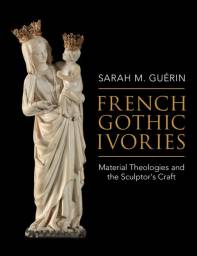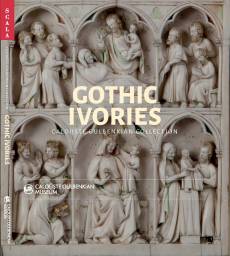
Office Hours: Wednesdays 12-3pm, and by appointment, CLICK HERE
Sarah Guérin is Associate Professor in the Department of History of Art at Penn. Her teaching focuses on the art of Medieval Europe, 700–1400. She received a B.Sc. from the University of Saskatchewan (2001), and her Ph.D. from the University of Toronto (2009). Before joining the faculty at Penn in 2016, she was Assistant Professor at the Université de Montréal (2013–2016), and held postdoctoral positions at Columbia University and the Courtauld Institute of Art.
Research Interests
Sarah Guérin’s research centers on the material conditions of medieval art, with an emphasis on the socio-economic circumstances surrounding production and use, including trade, artisanal organization, techniques, function as well as the theological conceits that influenced and enabled production. Focusing on art objects, which are defined more-strongly by their material composition (ivory, gold, silver, precious stones), opens a wide range of questions regarding not only the meaning of certain materials but also the economic conditions that enable their very conception.
Her book French Gothic Ivories: Material Theologies and the Sculptor’s Craft, published by Cambridge University Press in 2022, presents the first synthetic look at Gothic ivories within their social context. The organizing principle is the materiality of ivory itself, and how the conceptions of elephant ivory circulating in Gothic France (scientific, medical, exegetical, poetic) shaped the iconography and forms typical of Gothic ivories produced between 1230 and 1330. She has also published articles on the haptic qualities of medieval ivories, the function and meaning of microarchitectural frames, and one on the semiotics of representation on reliquaries adorned with three-dimensional figures in underway. She is a board member of the Gothic Ivories Project, and has published a number of object-oriented studies concerning these works, notably a catalogue of the ivories at the Gulbenkian Museum in Lisbon (2015).
Her focus on the carving of elephant ivory in the Middle Ages poses the question of how, and why, the raw material arrived in Western Europe. Two articles on cross-cultural trade routes addressed such questions for the thirteenth and tenth/eleventh centuries respectively, and Sarah has highlighted the important role played by trans-Saharan routes in provisioning items for the Mediterranean economic system. A third article treating more-specifically African trade routes over the same time period, 1000–1300, considers the impact of climate change on the intra-continental West African system that ultimately furnished desert caravans with a variety of goods, including ivory. This research has been encouraged by her involvement in an exhibition project at the Block Museum of Art at Northwestern University entitled "Caravans of Gold, Fragments in Time: Art, Culture and Exchange Across Medieval Saharan Africa," open now until July 2019. Subsequent venues at the Aga Khan Museum, Toronto, Sept. 21, 2019–Feb. 23, 2020, and the National Museum of African Art, Washington, D.C., Apr. 8–Nov. 29, 2020.



